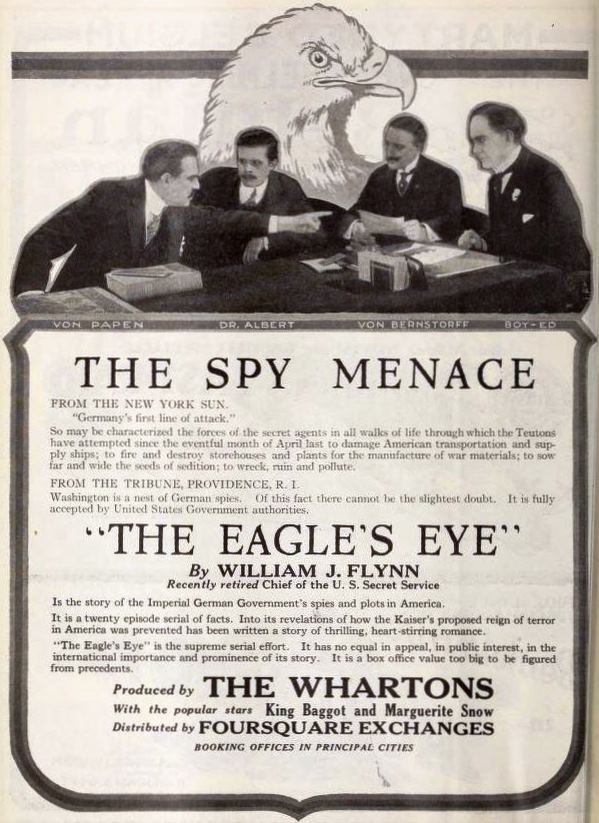The Eagle's Eye (lost 20-episode film serial; 1918)
The Eagle's Eye is a 20-episode silent film serial that was written in 1918 and was the only one of its kind known to have been based entirely on real events. Not even another lost serial, With Stanley in Africa, which came out in 1922, can make that claim - its success depended on the fact that it depicted the eponymous hero going up against a cruel group of slavers who had abducted the female lead character. The serial featured King Baggot and Marguerite Snow in the leading roles.
Plot Summary
The serial is based on the events surrounding America's entry into the first World War, and the villain is Captain von Rintelen, a real-life German agent who came to America with the goal of disrupting the production and shipment of the supplies needed by England and its allies. Among the events recreated in the serial was the capture of the documents that revealed the extent of German espionage in America, the sending of the Zimmermann Telegram, and of course, the entry of America into the war. The man who actually seized the German documents was named Francis Burke, but he was protected through the use of a single character who participated in all of the reenacted incidents, as were the other agents involved in the various true events.
Notes
This was the last serial released by the Wiener Brothers - its failure bankrupted them. It is possible that the main negative was housed in the Paramount Studios vault, and thus was destroyed in one of two fires, one on the 1930s and one in the 1960s. It's also possible that some episodes of this serial may still exist in Europe.
External Links
- The Wikipedia article on The Eagle's Eye. Retrieved 30 May '18
- The IMDB article on The Eagle's Eye. Retrieved 30 May '18
References
- CONTINUED NEXT WEEK (book by Kalton C. Lahue)
- BOUND AND GAGGED (book by Kalton C. Lahue), page 114

